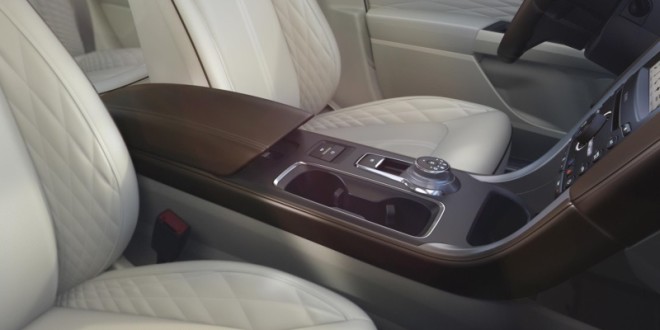At Ford, every detail matters, and customer experiences are what matter most. That’s why the automaker set out in search of what makes cup holders – a seemingly small convenience – so important to customers. In the end, customer feedback will drive substantial changes to refreshed console designs, offering a whole new take on the common cupholder that customers will surely appreciate.
“Being dissatisfied with your cup holder may be a minor annoyance, but it’s a daily one that detracts from the overall car experience over time,” said Jolanta Coffey, Ford instrument panel and console manager. “On the other hand, when you like your cupholder and it works well for you, it can make your vehicle feel like home.”
Research reveals the following cup holder facts:
- Bottles win big
In the U.S., people say drinks in bottles reign supreme. According to a new Nielsen survey, 79 percent of Americans say they use cupholders for bottles. A majority of people overall – 52 percent – say they typically use cupholders for cups of coffee and tea. Ford research found that their American customers – more so than those in other parts of the world – use large soft-drink cups, and are much likelier to drink on the go. In Asia, people tend to bring wide tea bottles into the vehicle.
- Putting satisfaction within reach – literally
People value cupholders that are within effortless reach. That’s easier said than done – given the range of possible arm lengths and seat positions. Ford studied driver ergonomics to balance the needs of as many drivers as possible in their planning. Ford designers are experimenting with the perfect place to put their cup holders so that they are within easy reach for at least 95 percent of their customers.
- Holding more than cups*
Among non-beverage items placed in cup holders, phones by far are the most common items placed in easy reach. Roughly half of those surveyed said they use their cupholder to store their mobile device, followed by 28 percent who use it for loose change. Food is placed in cup holders by 19 percent of respondents, while 14 percent use it for chewing gum or mints, and 12 percent for wallets. Millennials and teens are much more likely to use cup holders for non-beverage items than older drivers.
- Get a grip
A great cupholder is roomy enough for an extra-large cup, yet capable of holding a skinny bottle without it tipping over. Ford again did its homework, for the first time using its tactical robot arm RUTH to test Ford’s cup holders to ensure that the spring-loaded resistance grips within them meet customer preferences. RUTH measured things like how much effort it takes to insert a bottle, and how much tension the grips exert when a cup is pushed down into the holder.
- The three cups
Cupholders must be deep enough to hold tall containers, but shallow enough for a small cup. Ford found most cups fall between three basic scenarios: the average half-litre recyclable water bottle, the 340ml can used mostly for soft-drinks and the large 750ml paper cup found at many fast-food restaurants. If a cup holder is able to comfortably hold all three, it is likely to hold almost any cup.
Regardless of where they are in the world or what they like to store in their cupholders, Ford knows that for its drivers the lowly cup holder is a key consideration. And so it remains an important aspect of interior design at Ford, and will continue to receive much thought and attention.
Courtesy: Ford Nigeria
 ..:: AUTO REPORT AFRICA ::..
..:: AUTO REPORT AFRICA ::..




